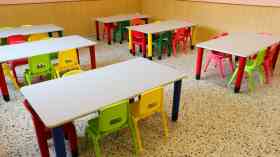
Improving the condition of school buildings
Following the RAAC crisis and last year’s damning National Audit Office report, we examine the issue of school buildings in poor condition and summarise the support that is available.
There have been a number of reports highlighting the poor state of some school buildings.
The Department for Education (DfE) said in its own Consolidated annual report in March 2021, that: “There is a risk of collapse of one or more blocks in some schools which are at or approaching the end of their designed life-expectancy and structural integrity is impaired. The risk predominantly exists in those buildings built in the years 1945 to 1970 which used ‘system build’ light frame techniques.”
A National Audit Office report into the condition of school buildings in 2023 found that 700,000 pupils are attending schools in need of major rebuilding or refurbishment.
Of course, since then, the issue of RAAC was thrust into the spotlight, with many schools having to shut fully or partially in September 2023. The issue had been brewing for some time, with investigations into collapsed school roofs in 2017 and 2018, and the Department for Education sending out a RAAC questionnaire in 2022 to find out just how many school buildings were affected by the material.
Finally, the Health and Safety Executive declared in 2023 that: “RAAC is now life-expired. It is liable to collapse with little or no notice.”
The DfE has committed to funding the removal of reinforced autoclaved aerated concrete present in schools and colleges in England either through grants, or through the school rebuilding programme if the works a large and complicated.
But what other funding is available to upkeep the school estate, and fix some of the issues cited in these damning reports?
Funding to improve buildings
Schools are either eligible for a school condition allocation (SCA) or eligible for the Condition Improvement Fund (CIF), depending on their size and type.
Local authorities, larger multi-academy trusts (MATs) and larger VA school bodies receive direct SCA to invest in priorities across the schools for which they are responsible. Smaller academy trusts, smaller VA bodies and sixth-form colleges are able to bid for CIF.
The priority for the funding is keeping education buildings safe and in good working order. This includes funding projects that address health and safety issues, building compliance and buildings in poor condition.
The government also provides urgent capital support (UCS), which is specifically for urgent condition issues that pose the threat of immediate school closure. Academies, sixth-form colleges or VA schools are eligible to apply if they do not receive school condition allocations (SCA) and they need funding assistance to address urgent building condition issues that either put the safety of pupils or staff at risk or threaten the closure of the school.
The application will be considered only if there is a genuine and immediate need for UCS and it cannot wait until the next round of CIF. Urgent capital support funding is offered primarily as a loan, subject to an assessment of finances, and trusts may also be required to contribute. Grant funding will be provided only in exceptional circumstances.
If a school has urgent and severe condition need that it is unable to resolve, the government’s website says it should contact the Department for Education for advice.
School rebuilding programme
The government’s school rebuilding programme (SRP) carries out major rebuilding and refurbishment projects at school and sixth-form college buildings across England, with buildings prioritised according to their condition.
Schools are prioritised for the programme if they had buildings of specific construction types that require replacement or if they meet the highest condition need, identified in data collected in the Condition Data Collection. They are also prioritised if their buildings have severe and urgent condition need that meant they were a high priority for replacement, or if their buildings have risks that have the potential to cause significant harm to pupils and/or staff.
There are currently 513 projects in the programme, announced in 2021. However there has been criticism that the programme is not going fast enough, with only four schools completed, as reported in The Independent. This is despite the previous government’s promise it would cover 50 a year.
Insufficient capital funding has exasperated the problem of the poor condition of school buildings. The Institute for Government has highlighted that DfE capital spending was “cut sharply in real terms in the 2010s and remains substantially below the level in 2007/08.”
It is uncertain how the new Labour government will tackle the crumbling school estate, with nothing announced at the time of writing. But with limited finances, it will be a tough job for this government to address the issue at the speed it’s needed.
Latest News
19/12/2025 - 09:54
The Education Committee has expanded its ongoing inquiry into the early years sector to examine how safeguarding can be strengthened in early years settings.
18/12/2025 - 09:25
The UK will be rejoining the Erasmus programme in 2027, following a package of agreements with the EU.
17/12/2025 - 09:31
Ofqual has fined exam board Pearson more than £2 million in total for serious breaches in three separate cases between 2019 and 2023 which collectively affected tens of thousands of students.
16/12/2025 - 09:19
The average funding rates will increase by 4.3% for under 2s, and by almost 5% for 3-and-4-year-olds.
15/12/2025 - 10:30
Local colleges are set to receive £570 million in government funding to expand training facilities in areas such as construction and engineering.







